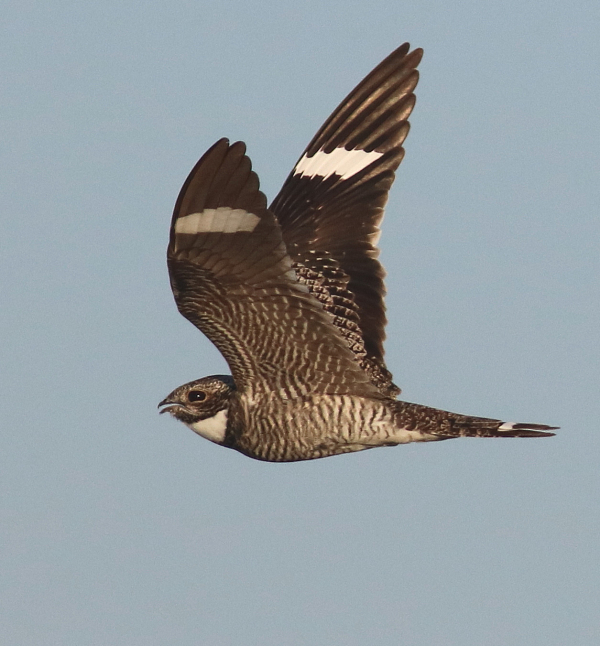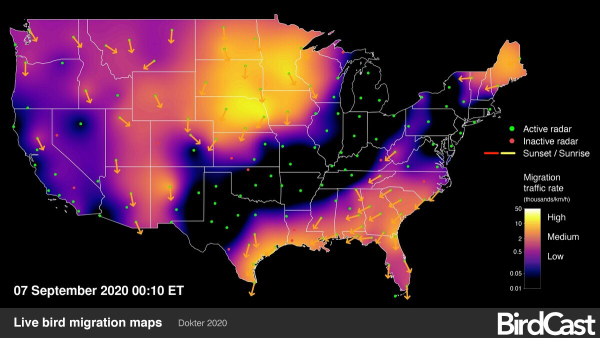
Many birds migrate at night when we are unable to view their flights, and some species fly at elevations so high we could not see them if they did migrate during daylight periods (Common Nighthawk photo by Paul Konrad).

A stopped-action image of a live bird migration map featured on BirdCast during the night of September 7, showing the intensity and direction of migrations across the Lower 48 States.
|
BirdCast develops and maintains some remarkable tools that allow you to monitor bird migration and inform yourself about migration forecasts. Information gleaned from weather radar were essential to develop and maintain BirdCast tools. One tool provides live radar bird migration maps that show where birds are migrating in real time. Another tool maps forecasted bird migration that predicts where and when migration will take place during a given night. A third tool provides migration alerts that you can subscribe to and find out when bird migrations are forecast.
Fall migration is an exciting period for all birders, and the synchrony between weather conditions, especially wind and the movements of fronts, can be helpful in understanding and appreciating nightly bird migrations and predicting upcoming migration activities. Birders will enjoy checking in on these interesting migration maps periodically, if not nightly.
Live Bird Migration Maps: Real-time analysis maps show intensities of actual nocturnal bird migration, as detected by US weather surveillance radar network from local sunset to sunrise. The Cornell Lab of Ornithology currently produces these live maps that you can refer to anytime online (link below).
Bird Migration Forecast Maps: Bird migration forecast maps show predicted nocturnal migration three hours after local sunset and are updated every six hours. These forecasts are created by computer models trained with the last 23 years of bird movements in the atmosphere as detected by the US NEXRAD weather surveillance radar network. In these models the Global Forecasting System (GFS) is used to predict suitable conditions for bird migration occurring three hours after local sunset. Colorado State University and the Cornell Lab of Ornithology currently produce these forecasts.
Local Bird Migration Alerts: Search with the local migration alert tool to determine whether birds are passing overhead near your home tonight in low, medium, or high densities. BirdCast provides live and local bird migration alerts throughout the continental United States by employing real-time analysis of bird migration activities detected by radar.
For more about these exciting BirdCast features and other elements that are sure to enhance your interest and understanding of fall migration as its happening, see https://birdcast.info/migration-tools/